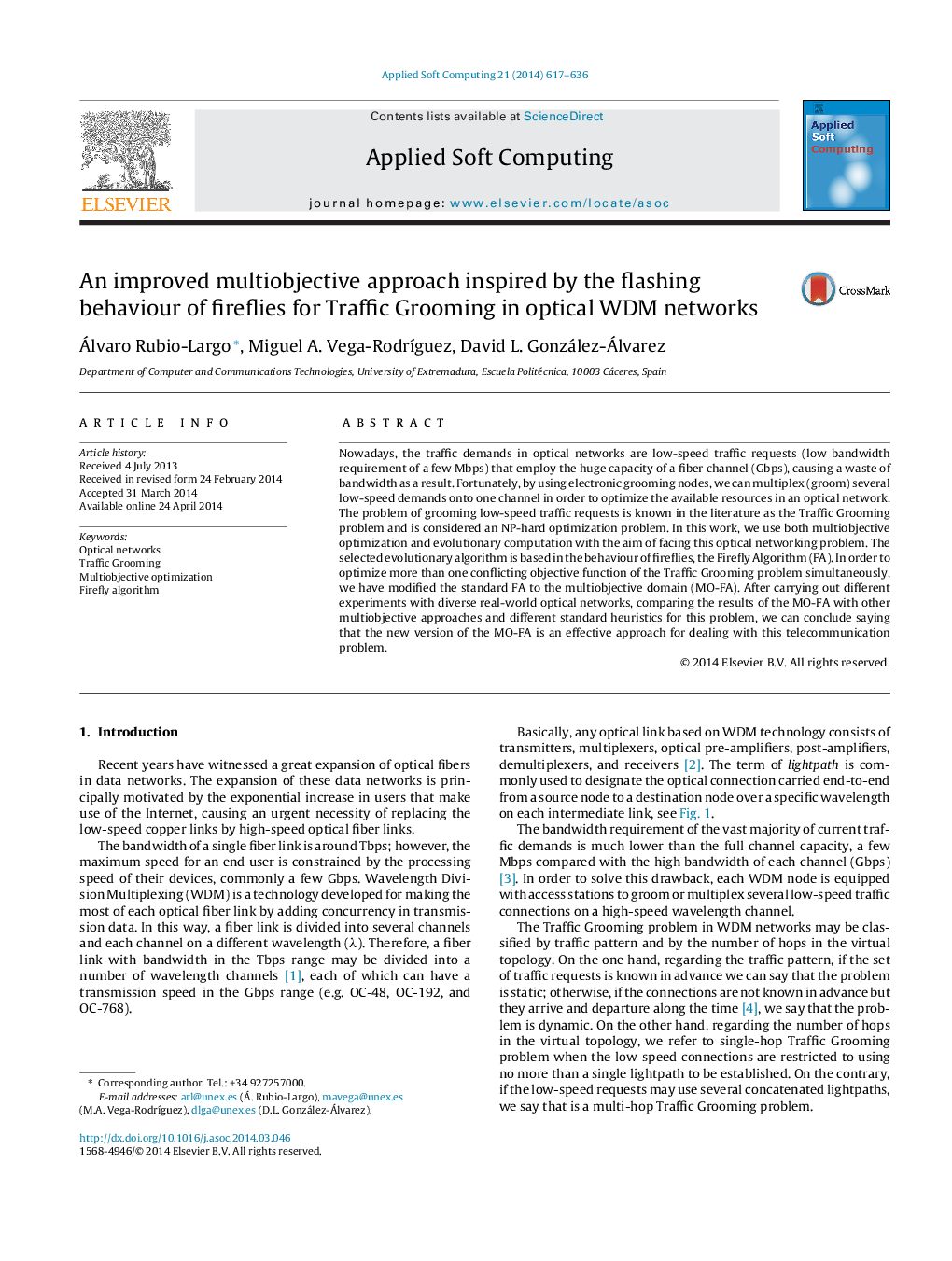| Article ID | Journal | Published Year | Pages | File Type |
|---|---|---|---|---|
| 495489 | Applied Soft Computing | 2014 | 20 Pages |
•We present an improved version of the Multiobjective Firefly Algorithm presented at EVOCOMNET 2013.•We test the effectiveness and goodness of the new MO-FA against diverse multiobjective approaches in 4 real-world optical network and different scenarios, a total of 576 data sets.•We compare the accuracy of the new MO-FA with well-known single-objective techniques published in the literature.•We conclude that the improved MO-FA is a very good choice for optimizing real-word NPhard problems, such as the Traffic Grooming problem.
Nowadays, the traffic demands in optical networks are low-speed traffic requests (low bandwidth requirement of a few Mbps) that employ the huge capacity of a fiber channel (Gbps), causing a waste of bandwidth as a result. Fortunately, by using electronic grooming nodes, we can multiplex (groom) several low-speed demands onto one channel in order to optimize the available resources in an optical network. The problem of grooming low-speed traffic requests is known in the literature as the Traffic Grooming problem and is considered an NP-hard optimization problem. In this work, we use both multiobjective optimization and evolutionary computation with the aim of facing this optical networking problem. The selected evolutionary algorithm is based in the behaviour of fireflies, the Firefly Algorithm (FA). In order to optimize more than one conflicting objective function of the Traffic Grooming problem simultaneously, we have modified the standard FA to the multiobjective domain (MO-FA). After carrying out different experiments with diverse real-world optical networks, comparing the results of the MO-FA with other multiobjective approaches and different standard heuristics for this problem, we can conclude saying that the new version of the MO-FA is an effective approach for dealing with this telecommunication problem.
Graphical abstractFigure optionsDownload full-size imageDownload as PowerPoint slide
